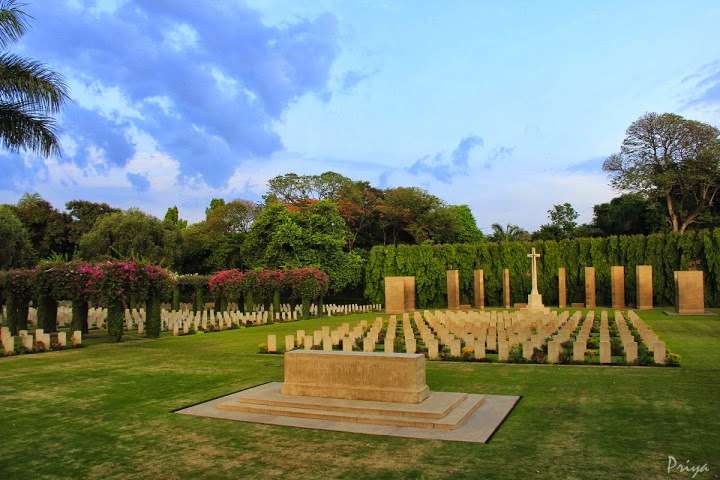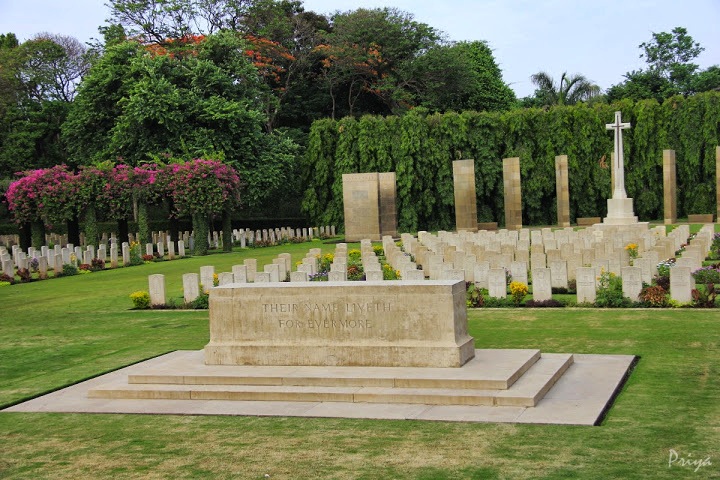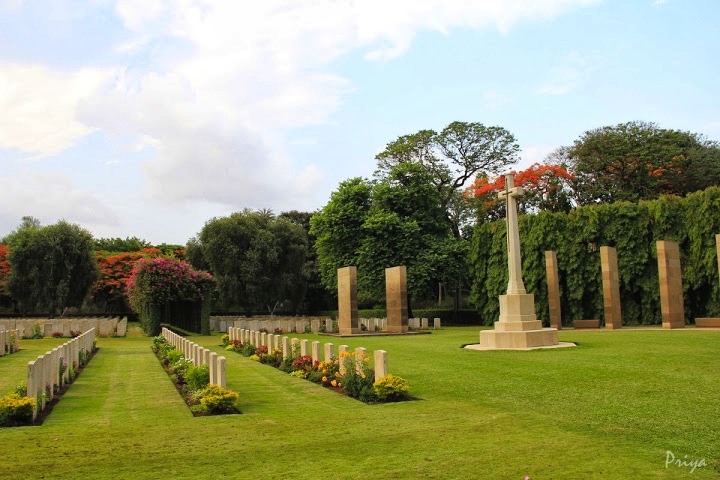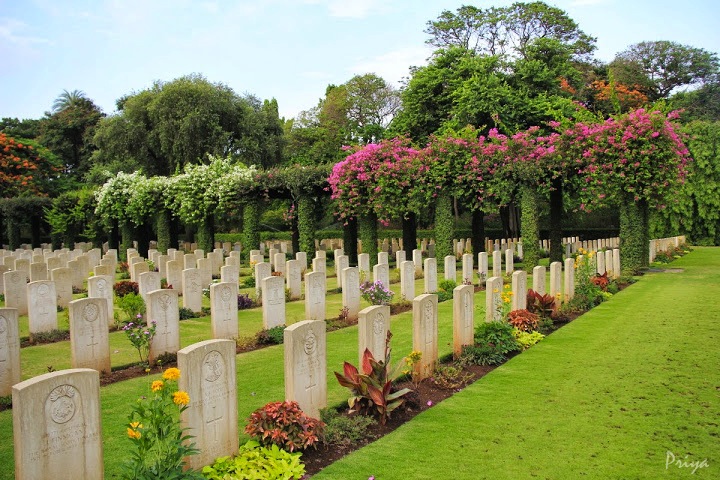The Kirkee War Cemetery stands on the side of a fairly unknown, scarcely used road that has turned busy only in recent years. Although until now, I’d never stopped to visit, I’ve passed by it many times in the fourteen years I’ve lived in Pune, and have always been impressed by the view from over its low-rise boundary wall.
The cemetery is located in a sunken patch of land such that when you enter its gate, which is on level with the road, you get a somewhat aerial view of the entire place. It looks relatively small as far as cemeteries go, but bears an immaculately tidy lawn and colourful flowers, with the headstones arranged in perfect, military precision. Visitors need to sign in and write their comments in a guest register, placed at the entrance.
The area that is Khadki, in Pune, was earlier called Kirkee by the British during the time of the British Raj. It is here the war cemetery stands. Information about the Kirkee War Cemetery and the Kirkee Memorial is engraved on a plaque by the side of the entrance within the cemetery grounds –
“In this cemetery are buried 1,665 men and women of the forces of the Commonwealth and one Polish soldier who died during the war of 1939 – 1945. Their graves were gathered here from many sites in western and central India where permanent maintenance could not be assured. Two merchant seamen and one soldier who died in that war and are buried elsewhere, are commemorated by memorials in the cemetery. There are also 8 non world-war burials. Within the cemetery stands the Kirkee Memorial on which are inscribed the names of 1,803 who died in the 1914 – 1918 War and 197 who died in the 1939 – 1945 War. Their graves are either unknown or could not be maintained or moved.”
The Kirkee War Cemetery and memorial were constructed and are maintained by The Commonwealth War Graves Commission.
As a refresher, the Commonwealth, also known as the Commonwealth of Nations or the British Commonwealth, is an intergovernmental organization comprising 54 independent member states, all of which (excluding Mozambique and Rwanda) were, at some earlier time, part of the British Empire from which the Commonwealth emerged.
The Commonwealth War Graves Commission founded in 1917 undertakes responsibility for maintaining the war graves of the 1.7 million servicemen who died fighting for their Commonwealth member nations during the First (1914 – 1918) and Second (1939 – 1945) World Wars. There are, presently, 2,500 such war cemeteries in 150 countries around the world.
The interesting thing about all Commonwealth War Cemeteries is that they all share similar architecture and horticulture. As per rules laid down by the Commission when it was founded, all people buried here are remembered by their name on the memorial or headstone. All headstones are uniform, with no difference due to military or civil rank, race or faith. All big war cemeteries contain the Stone of Remembrance and a Cross of Sacrifice.
When you enter the Kirkee War Cemetery, the first thing you observe is the Stone of Remembrance. Initially designed to commemorate the casualties of World War I, it is now used for the dead of World War II as well. The stone stands atop a three-stepped platform, and bears the words “THEIR NAME LIVETH FOREVERMORE”, a quote from the Wisdom of Sirach.
At the far end of the cemetery lies the Cross of Sacrifice. The Cross of Sacrifice is found in all Commonwealth war cemeteries containing 40 graves or more. A bronze broadsword with blade facing downward, engraved in the centre of the cross, reflects the military nature of the cemetery. The cross stands on an octagonal base and represents the faith of the majority of the dead.
The plaque beside the entrance also provides insight into India’s Armed Forces in the Two World Wars. Here’s what’s written about it –
“In both the First (1914 – 1918) and Second (1939 – 1945) World Wars the Indian Army, the second largest in the Commonwealth and the largest voluntary army in the world, took an important part. Expanded from its peacetime strength of under 2 lakhs to 15 lakhs in the First World War and 25 lakhs in the Second World War, it sent expeditionary forces to countries in three continents. In the First World War, close to 700,000 men went to the campaign in Iraq, in which the Indian Army played a major part; 140,000 went to France and Belgium, where their timely arrival in October 1914 enabled the hard-pressed Allies to hold the German advance and establish a stable line, and 144,000 fought in the Middle East.
In the Second War, the Indian Army was the major element in the East African campaign, there were never fewer than two Indian Divisions in the North African campaign and three fought in Italy, but its most memorable feat was in the Burma Campaign of 1942 – 1945 where, initially defending the eastern frontier, it went forward to win one of the great victories of the war.”
The cemetery is peaceful and calm, a fitting tribute to the brave souls who laid down their lives in war, some of whom were as young as 18 and 19. Here are some pictures of the cemetery.
The Commonwealth War Graves Commission has a website which details the location of its cemeteries and maintains a casualty database, listing the names and places of commemoration of the 1.7 million men and women of the Commonwealth forces who died during World Wars I and II.
















made an excellent reading, very informative
thanks dadda!! 🙂
Great Pics…
thanks pradeep! 🙂
I found your site while looking up where Prince Charles was for Remembrance Day, 2013.
A beautiful, poignant, set of pictures. Thank you for taking the time to put it together!
and thanks lots for stopping to read! 🙂